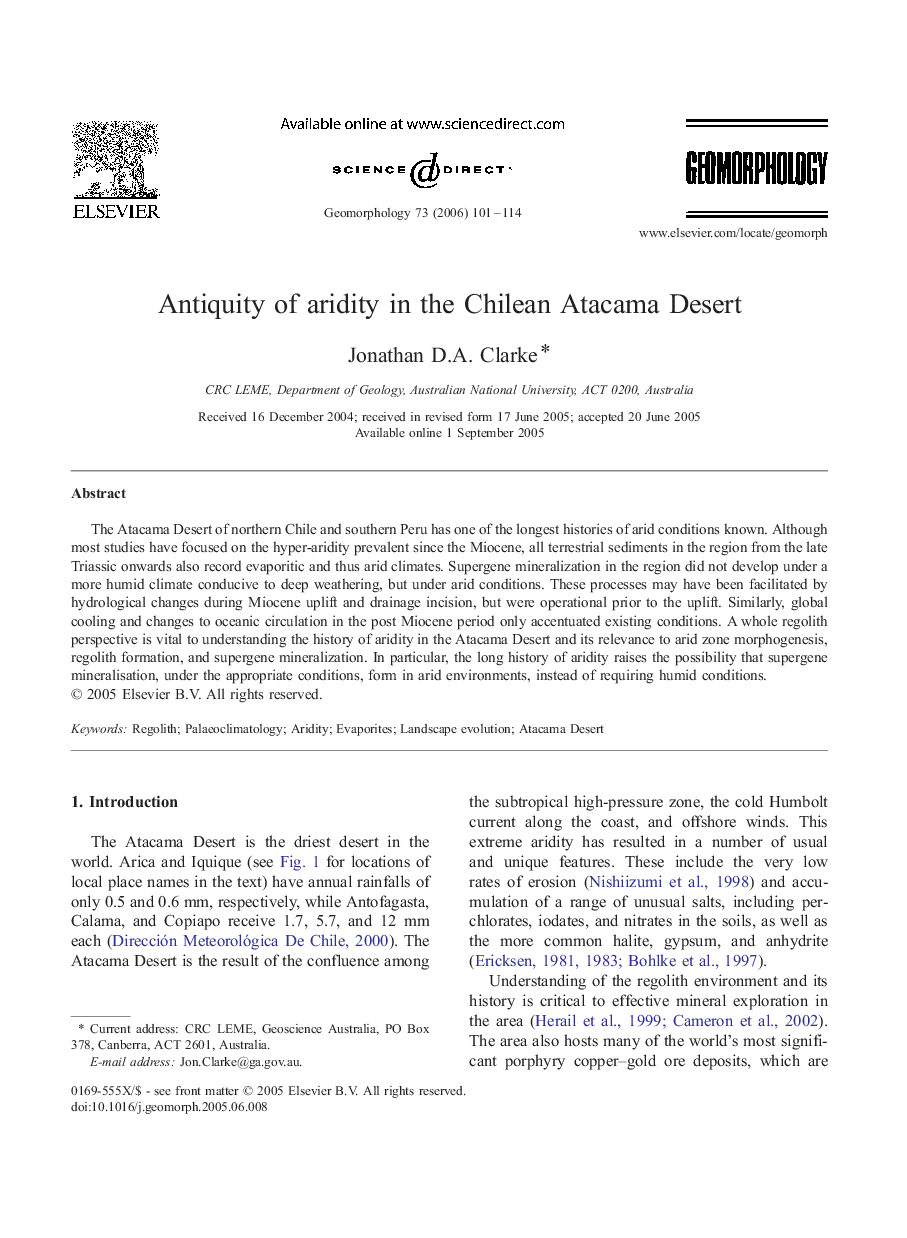| Article ID | Journal | Published Year | Pages | File Type |
|---|---|---|---|---|
| 4687668 | Geomorphology | 2006 | 14 Pages |
The Atacama Desert of northern Chile and southern Peru has one of the longest histories of arid conditions known. Although most studies have focused on the hyper-aridity prevalent since the Miocene, all terrestrial sediments in the region from the late Triassic onwards also record evaporitic and thus arid climates. Supergene mineralization in the region did not develop under a more humid climate conducive to deep weathering, but under arid conditions. These processes may have been facilitated by hydrological changes during Miocene uplift and drainage incision, but were operational prior to the uplift. Similarly, global cooling and changes to oceanic circulation in the post Miocene period only accentuated existing conditions. A whole regolith perspective is vital to understanding the history of aridity in the Atacama Desert and its relevance to arid zone morphogenesis, regolith formation, and supergene mineralization. In particular, the long history of aridity raises the possibility that supergene mineralisation, under the appropriate conditions, form in arid environments, instead of requiring humid conditions.
